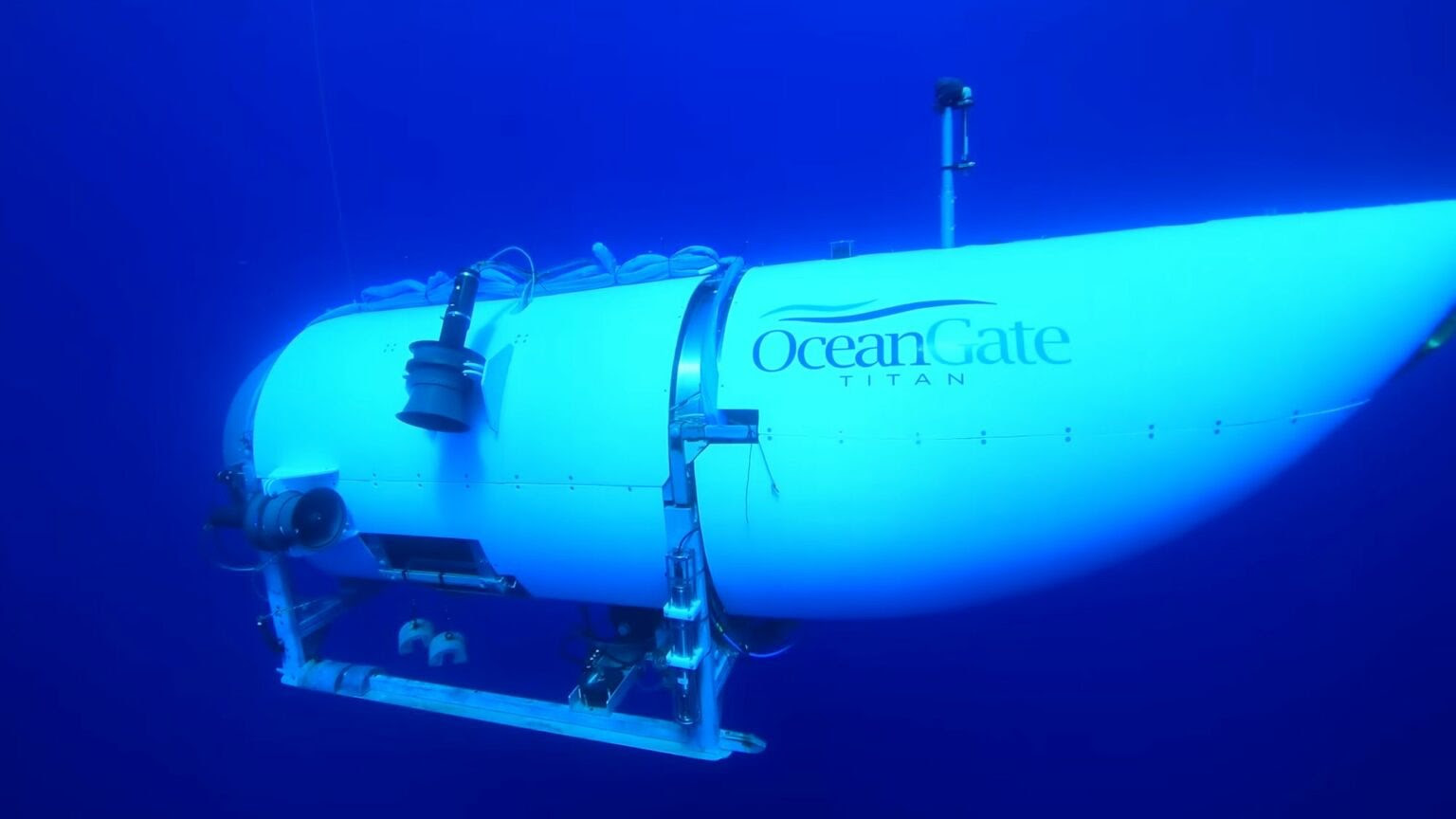Your cart is currently empty!

Sunk Sub: The Hidden Crash Factors
Sunk Sub: The Hidden Crash Factors
The world that we have made as a result of the level of thinking we have done thus far creates problems that we cannot solve at the same level as the level we created them at.”
—Albert Einstein
People the world over (you were probably one of them) watched with bated breath for days after the OceanGate submersible named “Titan” (based on the Titanic shipwreck its crew ventured down to explore) went missing off the coast of Newfoundland.
Then, on Thursday, the US Coast Guard was forced to confirm the worst fears: A debris field in the North Atlantic made it inevitable that Titan had suffered a “catastrophic implosion” (a violent collapse inward), instantly killing all five passengers on board.
We mourn the company’s founder and CEO Stockton Rush, who was piloting the Titan. The British billionaire and explorer Hamish Harding, 58. Pakistani-born businessman Shahzada Dawood, 48, and his 19-year-old son, Suleman, both British citizens. And French oceanographer and renowned Titanic expert Paul-Henri Nargeolet, 77, who had visited the wreck dozens of times.
When a submarine hull collapses, it moves inward at about 2,414km/h — that’s 671m per second, Dave Corley, a former US nuclear submarine officer, told the BBC. The time required for complete collapse is about one millisecond, or one thousandth of a second.
The air inside a sub has a high concentration of hydrocarbon vapors. When the hull collapses, the air auto-ignites and an explosion follows the initial rapid implosion, Corley said. Human bodies incinerate and are turned to ash and dust instantly. So at least the five men on board did not have to suffer.
A tragic accident?
No, not tragic. Tragedy implies force majeure. This catastrophe was human-made, and preventable.
US authorities announced an investigation, which will surely focus on the sub’s carbon-fiber midsection. The pressure vessels of deep vehicles like the Titan are normally constructed from a robust metal such as titanium and shaped in a sphere, to spread the immense pressure equally around the passenger compartment.
To fit more people inside, the OceanGate sub instead adopted a cylindrical shape, with a carbon fiber tube inserted between two titanium end caps. Carbon fiber is very tough — it’s used to build aeroplane wings and racing cars. We don’t know why the midsection imploded.
But those are symptoms. The hidden crash factors that led to the disaster will likely go unnoticed. This happens routinely in megaprojects. And that’s the real tragedy: It’s a blind spot that costs lives.
Hidden Failure Pattern #1: “No 50-Year-Old White Guys”
Here is one hidden crash factor: OceanGate founder and CEO Stockton Rush didn’t want to hire a bunch of “50-year-old white guys” like other submarine companies because he wanted his team to be “inspirational.”
“When I started the business, one of the things you’ll find, there are other sub operators out there but they typically have gentlemen who are ex-military submariners and you’ll see a whole bunch of 50-year-old white guys,” Rush told Teledyne Marine in August 2020.
“I wanted our team to be younger, to be inspirational and I’m not going to inspire a 16-year-old to go pursue marine technology but a 25-year-old you know who’s a sub pilot or a platform operator or one of our techs can be inspirational,” Rush continued. “So we’ve really tried to to get very intelligent, motivated, younger individuals involved because we’re doing things that are completely new.”
So Oceangate hired “inspirational” and inexperienced young people instead of “50-yaer-old white guys” who knew what they were doing. A deadly mix of political correctness, a desire to be hip, and woke ideology trumped quality and safety.
Hidden Failure Pattern #2: Silencing Whistleblowers
Here’s a second hidden pattern: Former OceanGate director of marine operations David Lochridge — one of those “50-year-old white guys” who were not “inspirational” enough — had been fired by Rush in 2018 after he blew the whistle on OceanGate by raising safety concerns over their first-of-a-kind carbon fiber hull and other systems.
As TechCrunch reported, David Lochridge was terminated in January 2018 after presenting a scathing quality control report on the vessel to OceanGate’s senior management, including Rush.
According to a court filing by Lochridge, the preamble to his report read: “Now is the time to properly address items that may pose a safety risk to personnel. Verbal communication of the key items I have addressed in my attached document have been dismissed on several occasions, so I feel now I must make this report so there is an official record in place.”
The report detailed “numerous issues that posed serious safety concerns,” according to the filing, including Lochridge’s worry that “visible flaws” in the carbon fiber supplied to OceanGate raised the risk of small flaws expanding into larger tears during “pressure cycling.” (These are the huge pressure changes the submersible would experience as it made its way to and from the deep ocean floor.) Lochridge noted that a previously tested scale model of the hull had “prevalent flaws.”
Carbon fiber composites can be stronger and lighter than steel, making a submersible naturally buoyant. But they can also be prone to sudden failure under stress. The hull Lochridge wrote about was made by Spencer Composites, the only company to have previously made a carbon fiber hull for a manned submersible.
Lochridge recommended non-destructive testing of the Titan’s hull to ensure a “solid and safe product.” The filing stated Lochridge was told that such testing was impossible, and that OceanGate would instead rely on its much-touted acoustic monitoring system.
The company claimed this technology, developed in-house, uses acoustic sensors to listen for the tell-tale sounds of carbon fibers in the hull deteriorating to provide “early warning detection for the pilot with enough time to arrest the descent and safely return to surface.”
Lochridge, however, worried in the lawsuit that the system would not reveal flaws until the vessel was descending, and then might only provide “milliseconds” of warning before a catastrophic implosion.
Hidden Failure Pattern #3: Hush-Hush or Rush-Rush
Lochridge also strongly encouraged OceanGate to have a classification agency, such as the American Bureau of Shipping, inspect and certify the Titan sub.
A day after filing his report, Lochridge was summoned to a meeting with Rush and the company’s HR, engineering and operations directors. There, the filing states, he was also informed that the manufacturer of the Titan’s forward viewport would certify the vessel to a depth of only 1,300 meters, due to OceanGate’s experimental design. The filing states that OceanGate refused to pay for the manufacturer to build a viewport that would meet the Titan’s intended depth of 4,000 meters. The Titanic lies about 3,800 meters below the surface.
The filing also claims that hazardous flammable materials were being used within the submersible.
At the end of the meeting, after saying that he would not authorize any manned tests of Titan without a scan of the hull, Lochridge was fired and escorted from the building.
Lochridge, who claimed he was discharged in retaliation for being a whistleblower, made his filing after OceanGate sued him in federal court in Seattle that June. OceanGate accused him of sharing confidential information with two individuals, as well as with the Occupational Safety and Health Administration (OSHA). In the lawsuit, OceanGate characterized Lochridge’s report as false, and accused him of committing fraud by fabricating a reason to be fired.
TechCrunch reported that “the lawsuit was settled in November 2018” and “neither OceanGate nor Lochridge responded to requests for comment.” A routine OSHA inspection of OceanGate in 2021 had found only three minor workplace safety violations resulting in no financial penalties.
Months after Lochridge’s dismissal, the company blogged its reasons for not having Titan certified by the American Bureau of Shipping or a similar organization.
“The vast majority of marine (and aviation) accidents are a result of operator error, not mechanical failure,” it reads. “As a result, simply focusing on classing the vessel does not address the operational risks. Maintaining high-level operational safety requires constant, committed effort and a focused corporate culture – two things that OceanGate takes very seriously and that are not assessed during classification.”
In 2019, Rush said in an interview: “There hasn’t been an injury in the commercial sub industry in over 35 years. It’s obscenely safe, because they have all these regulations. But it also hasn’t innovated or grown—because they have all these regulations.”
Following Lochridge’s departure, the Titan was tested safely on increasingly deep dives, including to 4,000 meters in the Bahamas. But one of Lochridge’s concerns would soon be borne out. In 2020, Rush admitted in another interview that the Titan’s hull “showed signs of cyclic fatigue.” Because of this, the hull’s depth rating had been reduced to 3,000 meters. “Not enough to get to the Titanic,” Rush said.
In 2020 and 2021, the Titan’s hull was either repaired or rebuilt by two Washington state companies, Electroimpact and Janicki Industries, that largely work in aerospace. In late 2021, the Titan made its first trip down to the wreck of the Titanic.
Spencer Composites said the Titan was not using its carbon fiber hull on its last, deadly dive. Presumably, apart from the hull work, one source familiar with the company told TechCrunch that not much with Titan had changed at all since 2018.
Conclusion
It is not too late to shine the spotlight on the hidden patterns of failure, not only in the Titan sub and OceanGate, but in all megaprojects. It’s a matter not only of saving billions in taxpayer moneys, but of life and death.
For additional details, or to schedule a complimentary discussion to systematically spot the hidden patterns of failure, and set up your success plan, please email me at coach@maximizeu.life or review our leadership courses under the Course tab on the website main menu. Thanks


Leave a Reply